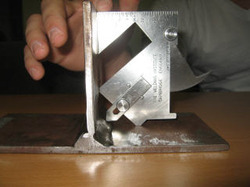- Home
- About Us
- Inspection Services
- Conventional Non-Destructive Testing
- Ultrasonic Weld Scan
- Ultrasonic Thickness Gauging
- Eddy Current Testing
- Radiography Testing
- Liquid Penetrant Testing
- View More

Visual inspection is one of the most common and most powerful means of non-destructive testing. Visual testing requires adequate illumination of the test surface and proper eyesight of the tester. To be most effective visual inspection does, however, merit special attention because it requires training (knowledge of product and process, anticipated service conditions, acceptance criteria, and record-keeping) and it has its own range of equipment and instrumentation. It is also a fact that all defects found by other NDT methods ultimately must be substantiated by visual inspection.
While visual inspection is limited to materials surface-only examination, it often detects the most damaging defects. Visual inspection (abbreviated“VT’ )by the American Society for Non-destructive Testing (ASNT) of welded components requires inspectors to have a broad knowledge of many technologies, including welding, destructive testing, non-destructive testing, and metallurgy, as well as the correct terminology for each.
ADVANTAGES
Inspection is performed rapidly and at a low cost.
Ability to inspect complex sizes and shapes of any material.
Minimum part preparation required